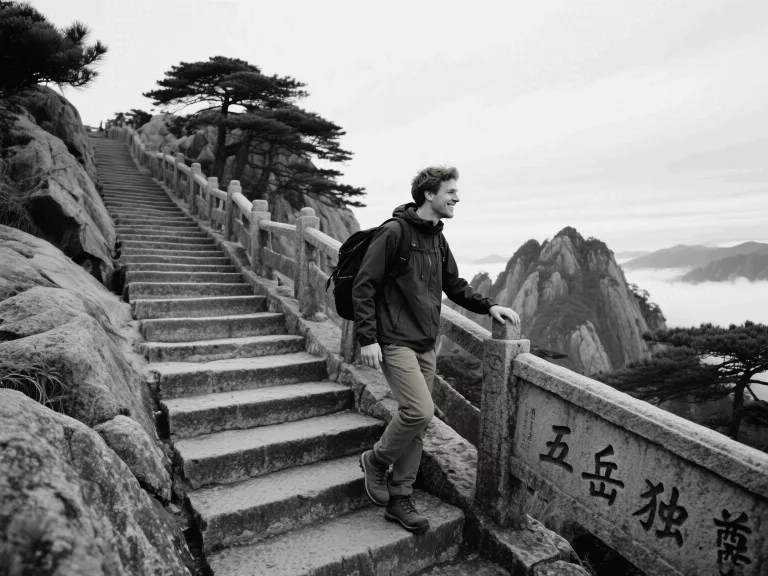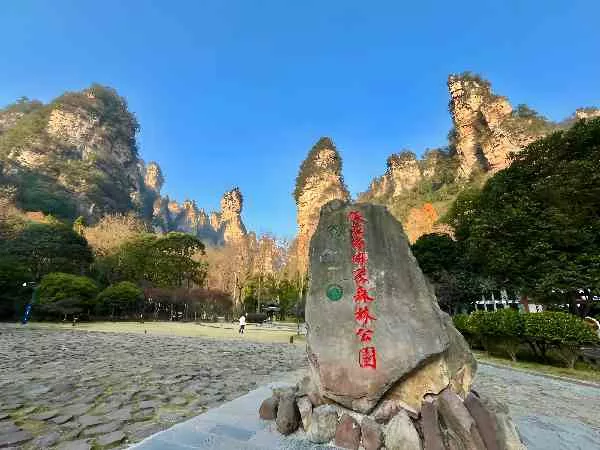Introduction: Explore the Majestic Beauty of Mount Huangshan
Nestled in Anhui Province, Mount Huangshan (also known as Yellow Mountain) is a UNESCO World Heritage Site renowned for its dramatic peaks, ancient pine trees, and surreal cloud seas. If you’re searching for a mount huangshan tour that blends natural wonders with cultural heritage, this guide will help you craft the perfect itinerary. From hiking trails to seasonal highlights, discover why this iconic destination ranks among China’s most breathtaking attractions.
Mount Huangshan has long been a source of inspiration for artists, poets, and travelers alike. Its unique granite peaks, some soaring over 1,800 meters high, create a dramatic skyline that seems almost otherworldly. The mountain is home to 72 named peaks, each with its own character and charm. The most famous include the Lion Peak, the Bright Summit, and the Beginning-to-Believe Peak, each offering a different perspective of the surrounding landscape.
But Mount Huangshan isn't just about its peaks. The mountain is also known for its ancient pine trees, some of which are hundreds of years old. These gnarled and twisted trees cling to the rocky cliffs, adding to the mountain's otherworldly beauty. The most famous of these is the Guest-Greeting Pine, which has become a symbol of Mount Huangshan and is said to welcome visitors from all over the world.
Another highlight of Mount Huangshan is its cloud seas. On clear days, the clouds roll in like a thick blanket, covering the peaks and valleys and creating a surreal landscape that seems straight out of a fairy tale. The best time to see the cloud seas is usually in the early morning or late afternoon, when the light is soft and the clouds are at their most dramatic.
In addition to its natural wonders, Mount Huangshan is also a haven for cultural enthusiasts. The area is home to numerous historical sites, including ancient temples, pagodas, and inscriptions. The mountain has been a source of inspiration for countless artists and poets, with many of their works on display in local museums and galleries. The Huangshan School of Painting, for example, is renowned for its landscapes that capture the essence of the mountain's ethereal beauty.
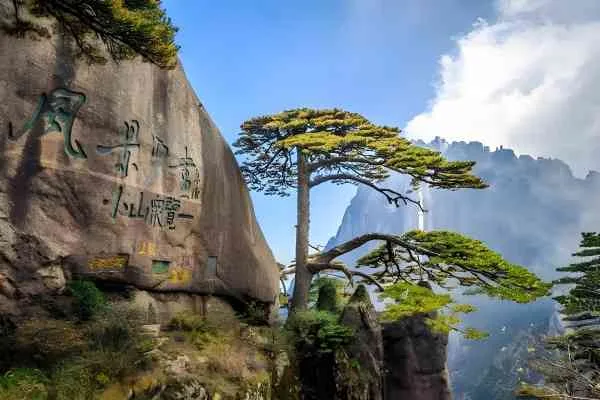
1. Understanding Mount Huangshan’s Unique Geography and History
1.1 The Formation of a Natural Masterpiece
Mount Huangshan’s unique beauty is the result of a long and complex geological history. Over millions of years, tectonic forces uplifted the area, creating the mountain's granite core. Erosion by wind, water, and ice then sculpted the rock into the dramatic peaks, steep cliffs, and deep valleys that we see today. The highest peak, Lotus Peak, stands at an impressive 1,864.8 meters (6,118 feet) tall, offering panoramic views of the surrounding landscape.
The mountain's granite formations are not only visually stunning but also geologically significant. The unique texture and composition of the granite have allowed for the growth of the mountain's iconic pine trees, which cling to the rocky surfaces with remarkable tenacity. These trees, along with the mountain's other natural features, contribute to Mount Huangshan's status as a natural masterpiece.
1.2 A Cultural Legacy
Mount Huangshan is not just a natural wonder; it is also a place steeped in history and culture. The mountain has been a source of inspiration for Chinese artists, poets, and scholars for centuries. Many famous works of art and literature have been inspired by the mountain's beauty, and it is often depicted in traditional Chinese paintings.
The mountain is also home to several ancient temples and shrines, which are important cultural and religious sites. These temples, some of which date back to the Tang Dynasty (618 - 907 AD), offer a glimpse into China's rich spiritual heritage. The sound of temple bells and the scent of incense add to the mountain's serene and spiritual atmosphere.
In addition to its artistic and religious significance, Mount Huangshan has also played an important role in Chinese history. It was a popular destination for emperors and nobility, who would often make pilgrimages to the mountain to pay their respects and seek spiritual enlightenment. Today, the mountain continues to attract visitors from all over the world, who come to experience its natural beauty and rich cultural heritage.
2. The Four Must-See Wonders of Mount Huangshan
2.1 Odd-Shaped Pine Trees (奇松)
Mount Huangshan’s pine trees are famous for their twisted forms and ability to grow in seemingly impossible places. Rooted in the cracks of granite, these resilient trees have adapted to the harsh mountain environment, their branches often reaching out in a way that appears to embrace the landscape. The Guest-Greeting Pine, a 1,000-year-old icon, welcomes visitors at the Jade Screen Pavilion. Its outstretched branch is like a warm welcome, inviting tourists to explore the wonders of the mountain. Nearby, the Farewell Pine seems to bid farewell to departing guests, adding a touch of sentiment to the natural beauty. These trees are not only a sight to behold but also a symbol of the mountain's enduring charm.
The unique growth patterns of the pine trees are a result of the mountain's geology and climate. The thin soil and strong winds have shaped the trees over time, creating their distinct and often contorted shapes. Some pines grow horizontally, defying gravity as they cling to the rocky cliffs. Others have multiple trunks, creating a unique and visually striking appearance. Each pine tree has its own story to tell, and their presence adds to the mystical and otherworldly atmosphere of Mount Huangshan.
2.2 Strange Rock Formations (怪石)
From the “Flying Rock” to the “Monkey Gazing at the Sea,” the mountain’s rocks resemble animals, mythical creatures, and human figures. The “Flying Rock” precariously balanced on a narrow base, seems to defy gravity, leaving visitors in awe of its stability. The “Monkey Gazing at the Sea” rock formation, on the other hand, is a testament to the power of imagination. Perched on a cliff, the rock bears an uncanny resemblance to a monkey looking out over the sea of clouds, waiting for the sun to rise.
These formations are the result of millions of years of erosion. Wind, water, and ice have gradually shaped the granite rocks into their current forms, creating a natural art gallery. The best time to view these rocks is during clear weather, when the sunlight highlights their unique shapes and textures. Each rock has its own unique charm, and visitors often spend hours exploring the mountain, discovering new formations and imagining the stories behind them. Whether it's the "Immortal Pointing the Way" or the "Dream Pen Producing Flowers," each rock formation is a natural wonder that sparks the imagination.
2.3 Sea of Clouds (云海)
One of Mount Huangshan’s most magical experiences is witnessing the sea of clouds, where mist blankets the valleys, turning the peaks into floating islands. As the clouds roll in, the mountain transforms into a surreal landscape, with only the tops of the peaks visible above the white expanse. This phenomenon occurs most frequently during spring and autumn, especially after rain. The best vantage points for viewing the sea of clouds include the Lion Peak, the Bright Summit, and the Beginning-to-Believe Peak.
The sea of clouds is not only a visual spectacle but also a sensory experience. The soft, cool mist against your skin, the sound of the wind through the pines, and the silence of the mountain create a peaceful and immersive atmosphere. Watching the clouds change shape and move across the landscape is a mesmerizing experience, and it's easy to see why the sea of clouds is one of the most popular attractions on Mount Huangshan. Whether you're an amateur photographer or simply a nature lover, the sea of clouds is a sight that will leave you breathless.
2.4 Hot Springs (温泉)
Relax in the therapeutic waters of the Tangkou Hot Springs, where mineral-rich pools offer a soothing retreat after a day of hiking. The springs maintain a constant temperature of 42°C (107°F), making them perfect for a soak year-round. The water is rich in minerals such as calcium, magnesium, and sodium, which are believed to have health benefits, including relieving muscle pain, improving blood circulation, and promoting relaxation.
The hot springs have a long history in Chinese culture, with records of their use dating back to the Tang Dynasty. They were once a favorite retreat for emperors and nobility, who would come to enjoy the healing properties of the water. Today, the hot springs are open to visitors from all over the world, offering a chance to unwind and rejuvenate after a day of exploring the mountain. There are several pools to choose from, each with its own unique features and temperature. Whether you prefer a quiet, secluded pool or a more social atmosphere, there's a hot spring pool for everyone.
3. Best Time to Visit Mount Huangshan
3.1 Spring (March–May): Blossoms and Mild Weather
Spring is a magical time to visit Mount Huangshan. As the snow melts and temperatures rise, the mountain comes alive with color. The air is fresh, filled with the scent of blooming flowers and newly sprouted foliage. It's a season of renewal, and the mountain's transformation from its winter slumber is a sight to behold.
One of the main attractions in spring is the blooming of the azaleas and rhododendrons. These colorful flowers carpet the slopes of the mountain, creating a vivid and beautiful landscape. The soft pinks, purples, and whites of the blossoms contrast beautifully with the green of the pine trees and the gray of the granite rocks. It's a photographer's paradise, with countless opportunities to capture the beauty of nature.
In addition to the flowers, spring also offers mild weather, making it ideal for hiking. The temperatures are comfortable, ranging from 10 - 20°C (50 - 68°F), and the days are longer, giving you more time to explore the mountain. The trails are less crowded than in the peak summer months, allowing you to enjoy the scenery at your own pace. Whether you're a seasoned hiker or a beginner, there are trails suitable for all skill levels. You can take a leisurely stroll along the paths, stopping to admire the views and take in the fresh air, or challenge yourself with a more strenuous hike to the summit.
Another advantage of visiting in spring is the chance to see the sea of clouds. While the sea of clouds can be seen year - round, it is more common in spring, especially after rain. The clouds add an element of mystery and beauty to the mountain, creating a surreal and otherworldly atmosphere. Standing on a peak and looking out over the sea of clouds, you'll feel as if you're on top of the world.
3.2 Summer (June–August): Cool Escapes and Waterfalls
Summer in Mount Huangshan is a great time to escape the heat of the city. The mountain offers a refreshing retreat, with average temperatures ranging from 20 - 28°C (68 - 82°F). It's a popular destination for families and outdoor enthusiasts, who come to enjoy the cool climate and the many activities available.
One of the highlights of summer is the opportunity to see the mountain's waterfalls at their fullest. The increased rainfall during this season means that the waterfalls are more powerful and spectacular. The sound of the rushing water is deafening, and the sight of the water cascading down the rocks is truly breathtaking. Some of the most famous waterfalls in Mount Huangshan include the Renzi Waterfall, the Baizhang Spring Waterfall, and the Jiulong Waterfall. Each waterfall has its own unique charm, and visiting them is a must - do activity in summer.
Summer is also an ideal time for hiking. The longer days give you more time to explore the mountain, and the clear skies offer stunning views of the surrounding landscape. There are many hiking trails to choose from, each with its own level of difficulty and scenery. You can hike to the top of one of the peaks to enjoy the panoramic views, or explore the valleys and forests to discover the hidden beauty of the mountain. Along the way, you'll encounter unique rock formations, ancient pine trees, and a variety of wildlife.
However, it's important to note that summer is the peak tourist season in Mount Huangshan, and the mountain can get quite crowded, especially on weekends and holidays. To avoid the crowds, it's best to visit during the week or early in the morning. You should also book your accommodation in advance, as it can be difficult to find a place to stay during the peak season.
3.3 Autumn (September–November): Crisp Air and Stunning Colors
Autumn is a season of beauty and tranquility in Mount Huangshan. The air is crisp and clear, and the leaves on the trees turn into a riot of colors, creating a breathtaking landscape. It's a great time to visit the mountain if you're looking for a peaceful and scenic getaway.
One of the main attractions in autumn is the changing colors of the foliage. The maple trees, gingko trees, and other deciduous trees on the mountain turn from green to red, orange, and yellow, creating a beautiful tapestry of colors. The contrast between the colorful leaves and the green pine trees and gray granite rocks is truly stunning. It's a photographer's dream, and you'll want to bring your camera to capture the beauty of the autumn scenery.
In addition to the foliage, autumn also offers clear skies and comfortable temperatures, making it ideal for hiking and sightseeing. The temperatures range from 10 - 20°C (50 - 68°F), and the days are still relatively long, giving you plenty of time to explore the mountain. You can take a leisurely hike along the trails, stopping to admire the views and take in the fresh air, or challenge yourself with a more strenuous hike to the summit.
Another highlight of autumn in Mount Huangshan is the chance to see the sunrise and sunset. The clear skies and the beautiful autumn colors make for a spectacular show. Watching the sun rise or set over the mountain is a truly unforgettable experience, and it's a great way to start or end your day.
However, autumn is also a popular time to visit Mount Huangshan, and the mountain can get crowded, especially during the National Day holiday in early October. To avoid the crowds, it's best to visit before or after the holiday. You should also book your accommodation in advance, as it can be difficult to find a place to stay during the peak season.
3.4 Winter (December–February): Snow - Covered Serenity
Winter transforms Mount Huangshan into a snowy wonderland. The mountain is covered in a thick layer of snow, and the pine trees are adorned with icicles, creating a magical and serene landscape. It's a great time to visit the mountain if you're looking for a peaceful and quiet retreat.
One of the main attractions in winter is the snow - covered scenery. The snow - covered peaks, the snow - laden pine trees, and the frozen waterfalls create a beautiful and otherworldly landscape. It's a photographer's paradise, with countless opportunities to capture the beauty of the winter scenery. You can take a stroll along the snow - covered paths, stopping to admire the views and take in the peaceful atmosphere, or hike to the top of one of the peaks to enjoy the panoramic views of the snow - covered landscape.
Another advantage of visiting in winter is the lower number of tourists. With fewer people on the mountain, you can enjoy the scenery in peace and quiet. You can take your time exploring the mountain, without having to worry about crowds or long lines. It's also a great time to take photos, as you won't have to compete with other tourists for the best vantage points.
In addition, winter in Mount Huangshan offers some unique activities, such as skiing and snowboarding. There are several ski resorts on the mountain, offering a variety of slopes for all skill levels. Whether you're a beginner or an experienced skier, you'll find something to enjoy. You can also go ice skating, sledding, or take a snowshoe hike through the forest.
However, it's important to note that winter in Mount Huangshan can be cold, with temperatures ranging from 0 - 8°C (32 - 46°F). You should dress warmly and bring appropriate gear, such as hats, gloves, scarves, and warm boots. You should also be prepared for snow and ice on the trails, and take extra care when hiking. It's also a good idea to check the weather forecast before you go, as the weather can change quickly in the mountains.
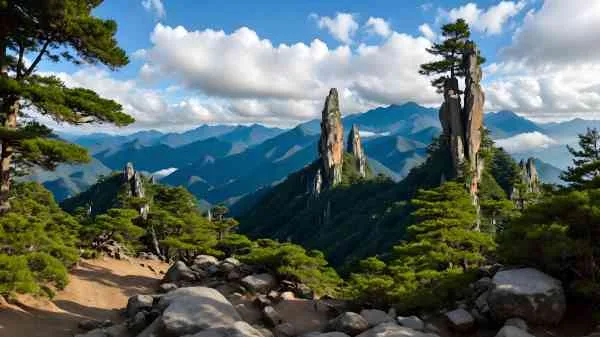
4. Planning Your Mount Huangshan Tour: Practical Tips
4.1 How to Get There
Getting to Mount Huangshan is relatively straightforward, with several transportation options available.
By Air: Fly into Huangshan Tunxi International Airport, which offers domestic flights from major Chinese cities like Beijing, Shanghai, and Guangzhou, as well as some international routes. Once you land, you can take a taxi directly to the mountain, which takes about an hour, or catch a shuttle bus to Tangkou, the gateway town to Mount Huangshan. The shuttle bus is a more budget - friendly option and runs regularly throughout the day.
By Train: High - speed trains have made traveling to Huangshan more convenient than ever. Huangshan North Station is well - connected to major cities across China, including Shanghai, Beijing, and Nanjing. The journey from Shanghai to Huangshan by high - speed train takes only about two and a half hours, allowing you to enjoy the scenery along the way. From the train station, you can take a bus or taxi to the mountain.
By Bus: Regular bus services operate from nearby cities such as Hangzhou, Nanjing, and Hefei. The bus journey can be a scenic way to reach Huangshan, passing through beautiful countryside. However, it usually takes longer than traveling by air or train. Buses typically arrive at the bus station in Tangkou, from where you can easily access the mountain.
4.2 Essential Packing List
When packing for your mount huangshan tour, it's important to be prepared for a variety of conditions. Here are some essential items to include:
Sturdy hiking shoes: You'll be doing a lot of walking, so comfortable, well - supported shoes are a must. Look for shoes with good traction to navigate the sometimes - steep and slippery trails.
Lightweight rain jacket: The weather on the mountain can change quickly, and rain is common. A waterproof and breathable rain jacket will keep you dry during unexpected showers.
Layered clothing: Temperatures can vary greatly depending on the altitude and time of day. Pack lightweight, breathable layers that you can add or remove as needed. A warm fleece or down jacket is also a good idea for early mornings or evenings, especially during the colder months.
Reusable water bottle: Staying hydrated is crucial, especially when hiking. Bring a refillable water bottle and take advantage of the water refill stations along the trails.
Sunscreen and hat: Protect yourself from the sun's rays, especially at high altitudes where the sun can be stronger. Sunscreen with a high SPF and a wide - brimmed hat will help prevent sunburn.
4.3 Accommodation Options
Mount Huangshan offers a range of accommodation options to suit different budgets and preferences.
Mountain Top Lodges: For a truly unforgettable experience, consider staying at one of the lodges on the mountain. Hotels like the Beihai Hotel and Xihai Hotel offer stunning views of the sunrise and sunset over the peaks. Waking up to the sea of clouds right outside your window is an experience you won't soon forget. However, these accommodations tend to be more expensive and need to be booked in advance, especially during peak tourist seasons.
Foot of the Mountain: If you're on a budget or prefer more amenities, there are many affordable guesthouses and hotels in Tangkou town, located at the foot of the mountain. These options provide easy access to the mountain's entrance and offer a variety of services, from restaurants to luggage storage. You can also find budget hostels if you're traveling solo or with a group and don't mind shared facilities.
5. Popular Hiking Routes and Tours
5.1 Classic 2-Day Itinerary
A classic 2-day mount huangshan tour allows you to fully immerse yourself in the mountain's beauty.
Day 1: Start your journey by taking the cable car to Jade Screen Pavilion, where you'll be greeted by the iconic Guest-Greeting Pine. From there, hike along the well - maintained trails to Bright Summit, one of the highest points on the mountain. The views along the way are spectacular, with panoramic vistas of the surrounding peaks and valleys. As the day winds down, check into the Beihai Hotel for an overnight stay. The hotel's location offers easy access to many of the mountain's attractions, and it provides a comfortable base for your exploration.
Day 2: Wake up early to catch the sunrise at Lion Peak, a magical experience as the first rays of light illuminate the sea of clouds. After the sunrise, explore the West Sea 大峡谷,a breathtakingly beautiful area with steep cliffs, deep gorges, and unique rock formations. The trail through the West Sea 大峡谷 is a bit more challenging, but the views are well worth the effort. As you make your way down, you can take the cable car to return to the base of the mountain, completing your memorable 2 - day adventure.
5.2 Family-Friendly Trails
For families or those looking for a less strenuous experience, Mount Huangshan offers several family - friendly trails. The Cloud Valley Temple to White Goose Ridge route is a great option. This path is relatively flat and wide, making it easy for children and less experienced hikers to navigate. Along the way, you'll be treated to beautiful views of the surrounding mountains, forests, and streams. The gentle incline allows you to take your time, stopping to admire the scenery and take photos at your leisure.
Another family - friendly choice is the Jade Screen Pavilion to Lotus Peak trail. While Lotus Peak is one of the highest peaks on the mountain, the section of the trail from the Jade Screen Pavilion to the base of the peak is suitable for families. The trail is paved and has handrails in some areas, providing extra safety. You can enjoy the sight of the majestic Lotus Peak up close, as well as the unique rock formations and pine trees that line the path.
5.3 Guided Tours vs. Independent Exploration
When planning your mount huangshan tour, you'll need to decide whether to go on a guided tour or explore independently.
Guided tours led by experienced local guides offer several advantages. They can provide in - depth historical and cultural context, bringing the mountain's legends and stories to life. For example, a guide can tell you the story behind the Monkey Gazing at the Sea rock formation, adding an extra layer of meaning to your visit. Guides also take care of all the logistical details, such as transportation, accommodation, and entrance tickets, saving you time and hassle. Many tour companies offer English - speaking guides, ensuring that you can fully understand the information provided.
On the other hand, independent exploration gives you the freedom to set your own pace and itinerary. You can spend as much time as you like at each attraction, veer off the beaten path to discover hidden gems, and have a more personalized experience. If you're an experienced traveler and enjoy the adventure of self - exploration, going solo or with your group can be a rewarding option. However, it does require more planning on your part, including researching the best trails, finding accommodation, and ensuring you have all the necessary supplies.
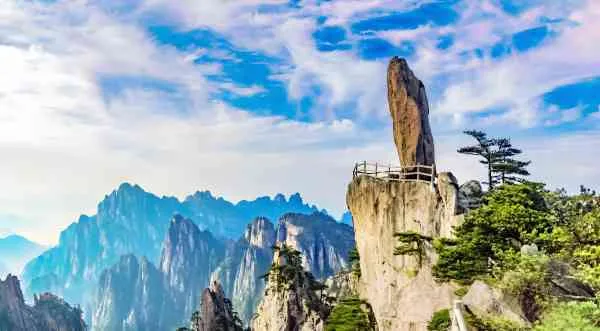
6. Cultural Experiences Beyond the Mountain
6.1 Ancient Villages of Southern Anhui
Extend your mount huangshan tour to nearby Xidi and Hongcun, UNESCO - listed ancient villages of southern Anhui famous for their Ming and Qing architecture, stone bridges, and tranquil lakes. Xidi, often referred to as a “living ancient museum,” is a well - preserved village with over 100 ancient houses. The architecture here is a fine example of traditional Huizhou style, with its white - washed walls, black - tiled roofs, and elaborate wood and stone carvings. Wander through the narrow cobblestone streets, and you'll feel as if you've stepped back in time. The village's layout is designed in the shape of a fish, with the waterways and streets mimicking the fish's bones and fins.
Hongcun, on the other hand, is known for its unique water system and the Moon Pond, a semi - circular body of water at the center of the village. The houses around the pond reflect in the clear water, creating a picturesque scene. The entire village is a masterpiece of ancient Chinese planning, with the water system not only providing a source of water for the villagers but also adding to the aesthetic beauty of the place. You can visit the Chengzhi Hall, a grand mansion with intricate carvings that showcase the wealth and craftsmanship of the past.
6.2 Tea Tasting in She County
Sample Huangshan’s renowned Maofeng or Tunxi Green tea in She County, where tea plantations dot the hillsides. She County has a long - standing tea - growing tradition, with the lush tea gardens offering a serene backdrop for a tea - tasting experience. Maofeng tea, one of China's top ten famous teas, is characterized by its delicate flavor, fresh aroma, and the unique shape of its leaves, which are flat and slightly curled, resembling the beaks of sparrows. When brewed, the tea has a light yellow - green color and a smooth, mellow taste.
Tunxi Green tea, another local specialty, is known for its strong, refreshing flavor and high - quality. As you sip the tea, you can learn about the tea - making process, from the picking of the tea leaves to the withering, rolling, and firing stages. Many tea houses in She County offer guided tea - tasting sessions, where you can not only sample different varieties of tea but also learn about the art of tea appreciation, including how to properly brew tea, the best water temperature to use, and the significance of the tea - ware. It's a wonderful way to unwind and soak in the local culture after a day of exploring the natural beauty of Mount Huangshan.
Conclusion: Embrace the Magic of Mount Huangshan
A mount huangshan tour promises a blend of adventure, relaxation, and awe - inspiring scenery. Whether you’re chasing sunrises above the clouds or soaking in ancient culture, this destination offers something for every traveler. The unique natural wonders, from the odd - shaped pine trees to the spectacular sea of clouds, create an unforgettable experience. The cultural experiences, such as visiting the ancient villages and sipping local tea, add depth and richness to your journey.
As you plan your visit, remember to consider the best time to go based on your preferences, whether it's the blooming flowers of spring, the cool escapes of summer, the stunning colors of autumn, or the snow - covered serenity of winter. Prepare well by choosing the right transportation, packing essential items, and deciding on the best accommodation for your needs. Whether you opt for a guided tour or independent exploration, the hiking trails of Mount Huangshan are waiting to be discovered.
Before you embark on your adventure, check the weather forecast before hiking, and always follow trail safety guidelines. This will ensure that you have a safe and enjoyable trip. So, what are you waiting for? Plan your visit today and discover why Mount Huangshan is a bucket - list must. Happy exploring!
